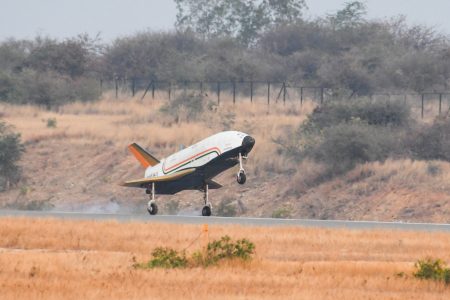New Delhi: In a historic achievement for Indian space exploration, the Pushpak, an SUV-sized winged rocket hailed as the “swadeshi space shuttle,” completed a flawless landing on a runway in Karnataka earlier today. The successful landing marks a significant advancement in India’s endeavor to venture into the realm of reusable rocket technology.
The rocket, dropped from an Indian Air Force helicopter, underwent rigorous testing as part of its developmental phase. Indian Space Research Organisation (ISRO) chief S Somanath hailed the outcomes of the test as “excellent and precise,” indicating a major breakthrough in the country’s space program.
“ISRO nails it again! Pushpak (RLV-TD), the winged vehicle, landed autonomously with precision on the runway after being released from an off-nominal position,” declared ISRO, celebrating the milestone achievement.
The mission simulated the approach and high-speed landing conditions of a Reusable Launch Vehicle (RLV) returning from space, showcasing Pushpak’s robotic landing capabilities under complex circumstances.
“Pushpak, lifted by an Indian Air Force Chinook helicopter, was released from an altitude of 4.5 km. Demonstrating remarkable autonomy, it approached the runway from a distance of 4 km, making cross-range corrections along the way. With precision, Pushpak touched down on the runway, employing its brake parachute, landing gear brakes, and nose wheel steering system to come to a halt,” explained ISRO in a statement.
Today’s successful landing marks the third flight of Pushpak, representing a pivotal step in its developmental journey. While operational deployment of Pushpak may still be years away, ISRO’s achievement underscores India’s ambitious pursuit of affordable and sustainable access to space.
“The Pushpak launch vehicle represents India’s bold vision for affordable space access. As a futuristic Reusable Launch Vehicle, Pushpak aims to make the upper stage reusable, reducing the cost of space missions significantly. Furthermore, it opens avenues for satellite refueling and refurbishment, thereby minimizing space debris,” emphasized Somanath.

